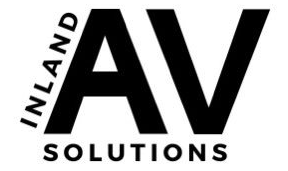Introduction to Audio Visual Integration
Definition of Audio Visual Integration
Audio visual (AV) integration combines audio and visual technology to create a seamless, interconnected system for communication, entertainment, or presentations. This includes the audio visual installation process installing equipment like displays, speakers, cameras, and control systems that work in harmony to support immersive experiences in spaces such as conference rooms, auditoriums, and classrooms.
Importance of Using a Professional for the Audio Visual Installation Process
A professional AV integrator ensures that all equipment functions smoothly together, providing an optimal experience tailored to each space’s needs. Proper integration prevents common issues like connectivity failures, poor audio quality, and complex user interfaces, which can disrupt the experience. With a skilled AV integrator, you can achieve a cohesive, user-friendly system.
What to Expect When Working with an Audio Visual Integrator
Initial Consultation
In the initial consultation, the AV integrator gathers details about the client’s goals, budget, and unique needs for the space. This step is essential for understanding the project scope and allows the integrator to suggest possible solutions.
Site Assessment and Planning
After the consultation, the integrator will conduct a site assessment to evaluate room acoustics, lighting, dimensions, and existing infrastructure. This assessment helps identify potential challenges and informs the planning stage to ensure equipment is positioned correctly for maximum efficiency.
Design and Proposal Development
Based on the consultation and site assessment, the integrator develops a tailored design proposal. This includes a layout of the AV system, suggested equipment, and a cost estimate. This plan allows clients to visualize the setup and provides transparency on costs and timelines.
Implementation of the Audio Visual Installation

Procurement of Equipment
Once the proposal is approved, the integrator sources the necessary equipment from reliable vendors, ensuring compatibility and quality. Experienced integrators often have established relationships with suppliers, allowing them to source high-quality equipment at competitive prices.
Installation Process
During installation, the AV team configures each component according to the design plan. This process involves wiring, mounting, and connecting devices such as projectors, speakers, and control panels. Attention to detail is crucial to ensure neat, secure installations and efficient cable management.
Testing and Quality Assurance
After installation, thorough testing is conducted to confirm the system functions as expected. The integrator assesses audio clarity, visual quality, and overall connectivity, making adjustments as needed. This step guarantees a smooth and reliable AV experience for users.
Post-Installation Support
Training for Users
A professional integrator offers user training, providing guidance on how to operate the system’s controls and troubleshoot basic issues. This empowers users to get the most out of their AV setup without relying on external assistance for daily use.
Ongoing Maintenance and Support
To ensure long-term functionality, many integrators offer maintenance services. This includes regular check-ups, firmware updates, and technical support, allowing clients to enjoy reliable performance and minimizing downtime.
Finding Audio Visual Installation Near Me
Researching Local Integrators
Searching for “audio visual integrator near me” can yield a list of providers in your area. Look for integrators with a strong web presence, as it often reflects their commitment to quality and transparency.
Evaluating Qualifications and Experience
Check the qualifications, certifications, and years of experience of each integrator. Reputable integrators often have certifications from industry bodies such as AVIXA or Crestron, showcasing their expertise and commitment to quality.
Reading Customer Reviews and Testimonials
Reviews and testimonials provide insights into the experiences of past clients. Look for feedback on the integrator’s responsiveness, quality of work, and ability to meet deadlines. Positive reviews from similar projects can indicate a good fit for your needs.
Conclusion
Benefits of Professional Audio Visual Installation
Professional AV installation offers a reliable, user-friendly experience with reduced technical issues and ongoing support. Skilled integrators bring expertise and attention to detail, ensuring the system is designed and implemented to meet specific requirements.
Final Thoughts on Choosing the Right Integrator
Choosing a qualified AV integrator near you is a key step in achieving a high-quality AV system. Consider the integrator’s experience, client reviews, and commitment to service when making your decision. This choice can ensure a streamlined experience and long-lasting satisfaction with your AV setup.


